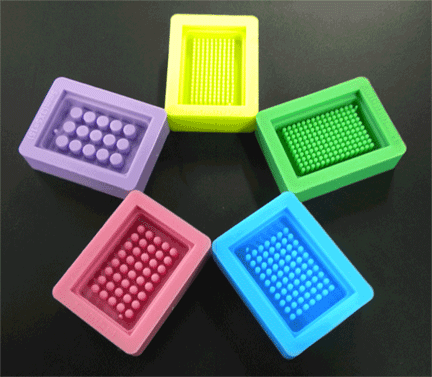Buy Tissue Microarrays
Tissue Microarrays at Geneticist Inc.
Geneticist Inc. has an extensive tissue microarray procurement procedure which is used for custom collections. Our biorepository is IRB compliant and employs only the highest industry standards to ensure the best quality of collection and inventory management. Using our extensive procurement and inventory management process, we are able to provide our clientele with access to human tissue microarray samples in a variety of different formats. Our tissue sample products are available to buy and we ship worldwide.
Geneticist Inc. supplies sub-atomic (molecular) subsidiaries from human tissues and natural biological liquids. We have a monumental biorepository of aliquots accessible for quick and error-free shipments. Subordinates from individual tumor, infected or typical human tissues are available upon request. We give comprehensive clinical data and an extensive layered report for every particular case related to shipments.
Geneticist provides Tissue microarrays of the following cancer tissue types
Types of Cancer Tissue:
colon / rectum tissue
lung tissue
ovary tissue
bladder tissue
metastatic tissues
head & neck tissue
kidney tissue
prostate tissue
stomach tissue
melanoma tissue
lymphoma tissue
thyroid tissue
breast tissue
order tissue microarrayS Today
What are Tissue Microarrays?
Recent developments in pathology research have lead to the invention of the tissue microarray. These innovations are paraffin blocks with up to 1000 tissue samples embedded in them at specific coordinates. The structure allows for high throughput analysis of multiple samples in parallel. Cylindrical tissue cores from a variety of donor blocks are assembled and embedded in a single block of paraffin at precise locations. Conditions are standardized on a single slide and facilitate the simultaneous analysis of DNA, RNA and proteins. Tissue samples are preserved and the best use of limited tissue archives is accomplished. Markers for diagnosis and prognostication of disease can be found using this new technique. Its automated workflow and data analysis supports retrospective and prospective tissue studies.
In many areas of medical science, researchers are uncovering the genetics underlying various diseases. Techniques from molecular genetics have resulted in prognostic and diagnostic markers whose studies move science from basic research into a clinical context. Molecular biology has seriously impacted the study of cancer, shedding light on the progression of the disease as well as its initial development. Discovering how cancer develops in an incremental fashion from normal tissue to malignant tumors is crucial to the development of new tools for diagnosis, treatment and, ultimately, finding cures for these disease types. Research on clinical tissue has resulted in novel markers at the gene level. Validating these markers using the traditional tools from histopathology is time consuming and costly. Advocates argue that new technology overcomes these problems by accomplishing the measurement of genes and gene products simultaneously on up to 1000 tissue samples. Molecular profiles of RNA, DNA and protein from clinical samples can all be assessed in parallel. Pathologists can then use techniques like immunohistochemistry, fluorescence in situ hybridization and RNA in situ hybridization at great speed and lower cost.
Tissue microarrays have many advantages over traditional approaches. These new techniques allow for amplification of a scarce resource and provide for a many-fold increase in the number of assays produced. The traditional approach uses histological samples of 3-5 mm thickness that can be sectioned and used to produce about 100 assays from an archived block. New microarray technology allows for needle biopsy to be performed up to 300 times. New technology also allows for the high throughput collection of data by simultaneously analyzing a large number of samples. A block that has 1000 samples cut 200 times produces 200,000 assays. Traditional techniques have substantial slide to slide variability whereas tissue microarrays create experimental uniformity by treating each tissue sample identically. These techniques cut down on reagents used and also require fewer technicians to process. In cases where the original tissue sample needs to be returned to the donating institution, new techniques also conserve the original tissue and do not destroy the tissue block.
Tissue microarrays are proving to be a valuable new technology, boosting productivity, conserving resources and facilitating the movement of research from the laboratory to the clinic. They allow for many of the tools of modern scientific practice to be carried out and are a promising new tool for translational medical science.
Customized Tissue Microarrays
Customized tissue microarrays could be utilized to corroborate clinical pertinence of potential bio-targets in the advancement of therapeutics, diagnostics, and in considering new protein markers and genes. Geneticist gives customized tissue microarrays or also called (TMAs) for target definition and biomarker investigation in ordinary adjoining, infected, and normal tissues. The utilization of TMAs offers an optional quality control system for non-research applications as well.
Geneticist constructs tissue microarrays utilizing precisely chosen donors. Definite tissue confinement in every TMA unit is recorded with extreme precision by our geneticists. Please contact us to find out more about our customized tissue microarrays.




